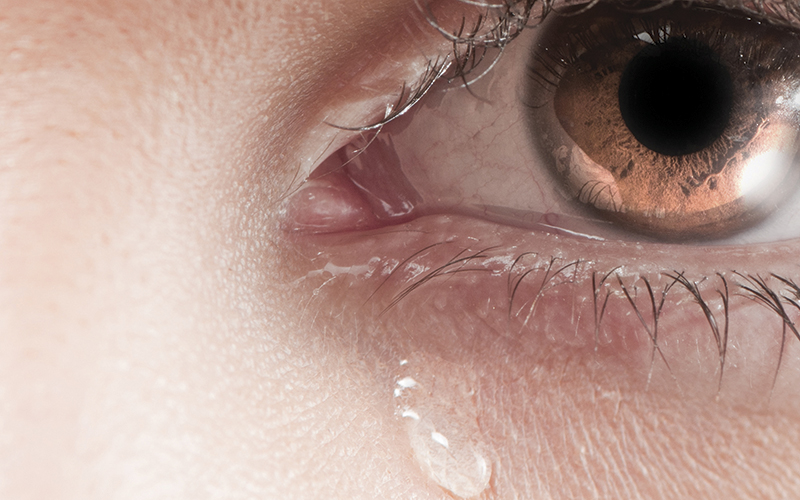Bodily secretions could be used to power biomedical devices, according to new research.

Scientists have discovered a way to harvest electricity from tears, saliva and milk, thanks to lysozyme. This is an enzyme that generates electricity when it is put under pressure (see box). They have published a paper, which states that if we can learn to harvest it effectively, it could become a new fuel source for all kinds of implanted devices.
The researchers, from the Bernal Institute at the University of Limerick, observed that crystals of the model protein lysozyme can generate electricity when pressed.
The ability to generate electricity by applying pressure is known as direct piezoelectricity and is a property of materials, such as quartz, that can convert mechanical energy into electrical energy and vice versa (see box). Such materials are used in a variety of applications, ranging from resonators and vibrators in mobile phones to deep ocean sonars and ultrasound imaging. Bone and tendon are also known to possess piezoelectricity.
What is piezoelectricity?
The authors say: “A property of crystals and chiral molecules that originates from the absence of a centre of symmetry in their structures. When such materials are stressed, their electrical neutrality is perturbed and a net polarisation results at the surface of the material. The Curie brothers first demonstrated this property, known as the direct piezoelectric effect, in 1880. There also exists an opposite effect known as the converse piezoelectric effect; in this case, an electrical field applied across a piezoelectric material causes a mechanical strain to develop. Of the 32 crystallographic point groups, 21 do not possess a centre of symmetry and 20 of these are classed as piezoelectric.”
Aimee Stapleton is the lead author of the research and an Irish Research Council EMBARK Postgraduate Fellow at the institute. She says: “While piezoelectricity is used all around us, the capacity to generate electricity from this particular protein had not been explored. The extent of the piezoelectricity in lysozyme crystals is significant. It is of the same order of magnitude found in quartz. However, because it is a biological material, it is non toxic so it could have many innovative applications, such as electroactive anti-microbial coatings for medical implants.”
The protein was once investigated by Alexander Fleming, as an antibiotic candidate before he discovered penicillin, and was one of the first proteins to ever be mapped in three dimensions.
Co-author Professor Tewfik Soulimane adds: “The high precision structure of lysozyme crystals has been known since 1965. In fact, it is the second protein structure and the first enzyme structure that was ever solved, but we are the first to use these crystals to show the evidence of piezoelectricity.”
While crystals are the “gold standard” for measuring piezoelectricity in non-biological materials, this research indicated that the same approach can be taken in understanding this effect in biology.
What is lysozyme?
The authors say: “Lysozyme is an antibacterial enzyme found in the egg whites of birds and in mammalian tears, saliva, and milk. It catalyses the hydrolysis of specific kinds of polysaccharides thereby weakening the cell wall, making the bacteria susceptible to osmotic lysis. Hen egg-white lysozyme is one of the most studied model proteins and can crystallise as tetragonal, monoclinic, orthorhombic, triclinic, or hexagonal crystals. [In our paper] we focus on the tetragonal and monoclinic forms of lysozyme which are typically described by point group 422 and point group two, respectively.”
This is a new approach, as previously scientists have tried to understand piezoelectricity in biology using complex hierarchical structures, such as tissues, cells or polypeptides, rather than investigating simpler fundamental building blocks.
The discovery could have far-reaching implications, and may lead to further research in the area of energy harvesting and flexible electronics for biomedical devices. Future applications of the discovery could potentially include controlling the release of drugs in the body by using lysozyme as a physiologically mediated pump that gathers energy from its surroundings.
Being naturally biocompatible and piezoelectric, lysozyme may present an alternative to conventional piezoelectric energy harvesters, many of which contain toxic elements such as lead.
Professor Luuk van der Wielen, who is the Director of the Bernal Institute, believes that the impact of this discovery in the field of biological piezoelectricity could be “huge”.
